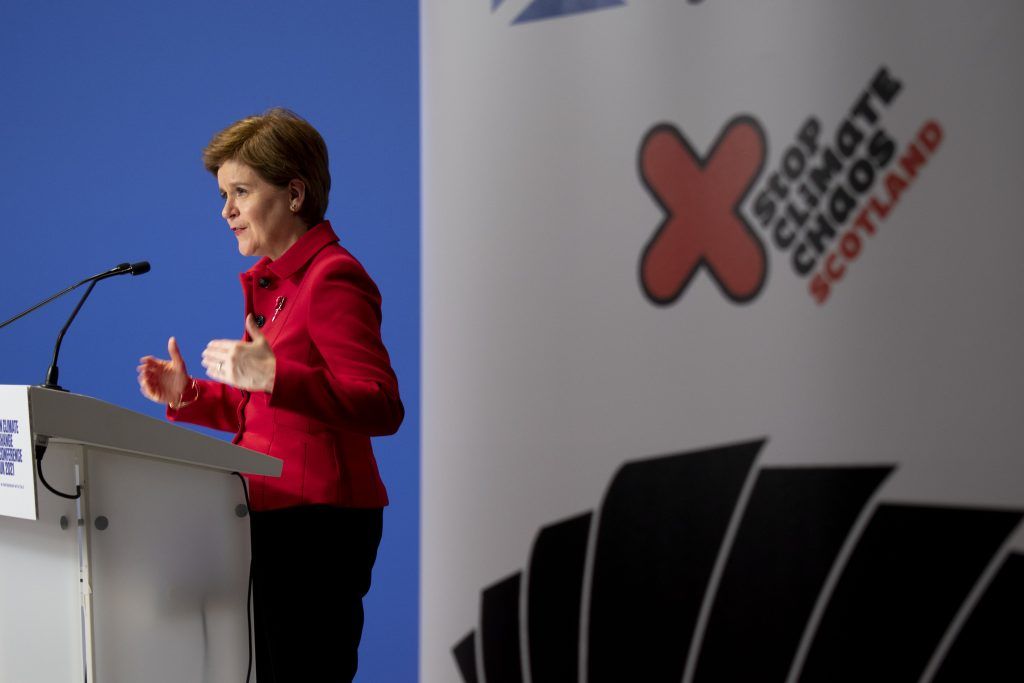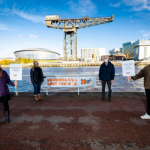By Anne Callaghan, Policy and Public Campaigns Officer, SCIAF
This week 100 days will have passed since the UN climate talks COP26 ended in Glasgow, the legacy of COP26 is a Scottish Government that can be seen through two prisms: the international view still reverberating positively from Scotland’s funding announcement on Loss and Damage at the urging from Global South voices; and a country that must do more to meet its own legally mandated emissions targets which it has missed for the last three years.

For Stop Climate Chaos Scotland, the issue of Loss and Damage was one we wanted to see the Scottish Government to be active on at COP26. It was a theme of one of the roundtable ‘Glasgow Climate Dialogue’ sessions run by the coalition of over 60 civil society organisations, working with international partners and the Scottish Government, to listen to and amplify Global South voices in the run up to COP26.
Loss and Damage is where climate impacts go beyond the limits of mitigation and adaptation and where things are irrevocably lost or damaged: from land or homes being lost, to cultures and livelihoods decimated due to the scale of recovery needed being too costly, or politically or socially challenging. This can be caused by sudden events like typhoons or slow onset events like sea level rise, ocean acidification, and desertification.
Experts say “By 2030, the economic costs of Loss and Damage in developing countries are expected to reach $200–580 billion”.

Scotland’s impact on the international stage
At COP26 the UK Presidency only put Loss and Damage on as a theme as opposed to ensuring it was on the full agenda, and did not put diplomatic capital into ensuring there was greater progress than there was on the issue. Scotland’s announcement to give £2 million towards Loss and Damage at the start of COP26 helped bring the issue up the political agenda and is symbolically important as for the first time a developed country acknowledged the need to “pay our debt to developing countries now living with the impact”. It has started a process that we hope will be unstoppable and led to other countries and regions making commitments. Alongside this, large scale philanthropies offered ‘kick starting’ funds of $3million for a UN system on Loss and Damage following the Scottish announcement.
At the end of the COP26, there was only an agreement to start the ‘Glasgow Dialogue’ – to have a two year process to look at options of how to fund work on Loss and Damage with a relatively small amount of money to support that process. The end goal for civil society is a fully-fledged Loss and Damage facility that commands large financial flows within the UNFCCC to address and provide the technical expertise to enable countries to put in place sound strategies and programmes.
With 100 days passed since COP26 the focus already has shifted onto COP27 which will take place later this year in Egypt. At COP27, there will be great interest in hearing about the progress Scotland has made and we look forward to seeing how the First Minister will continue to champion Loss and Damage internationally. The work Scotland does this year and next to build on their welcome commitment and to support this process may be vital in helping to persuade others to follow suit.
On the home front
For the past three years, Scotland has missed meeting its legally binding targets of cutting greenhouse gas emissions. No one doubts that there are big decisions to be made in these crucial next five years to get us on track to meeting these targets and truly being a climate world leader. However, Scotland’s commitment to reach a 75% reduction in emissions by 2030 does not keep us in line with the goal of keeping global temperature rises to 1.5 alive. The calls from civil society around the world in Glasgow at COP26 asked all countries to go away and come back with improved offers and Scotland also needs to up it’s game.
In 2022 there are big opportunities to do this. From a new energy strategy, a new bill on agriculture, and new National Planning Framework – all of these need to tie together to deliver transformational changes and emissions reductions.
The storms of the last few days may end up being ascribed to climate change impacts here in Scotland. We are not immune to the impacts of climate change. And we cannot hide from it or our responsibility to act.


